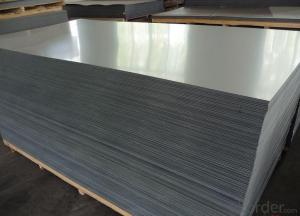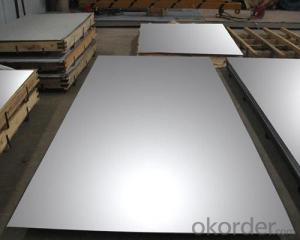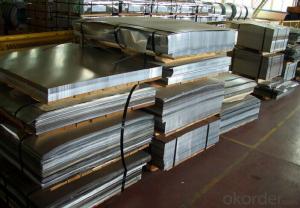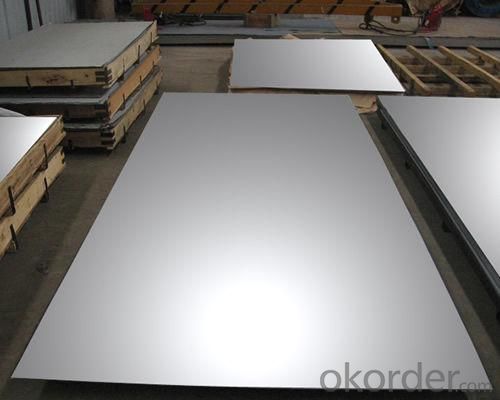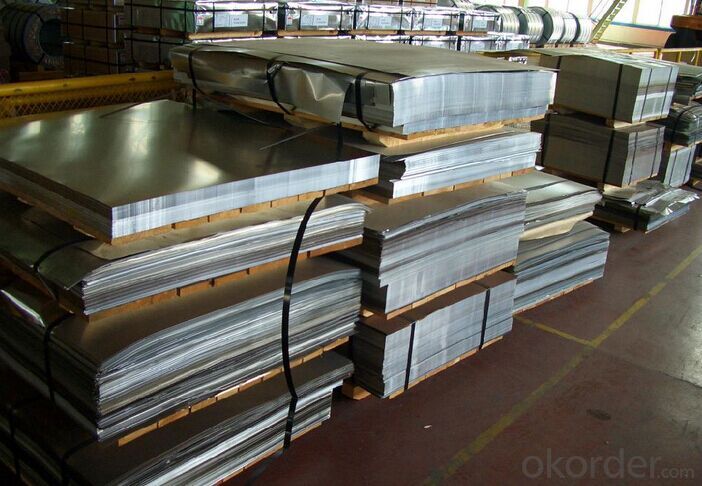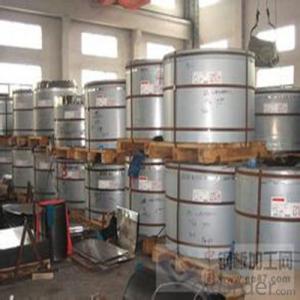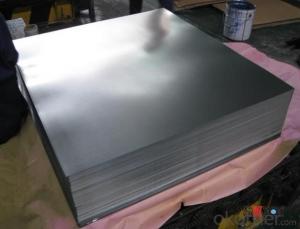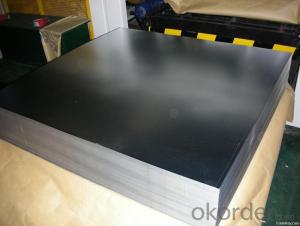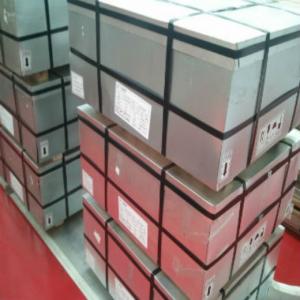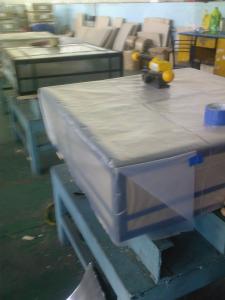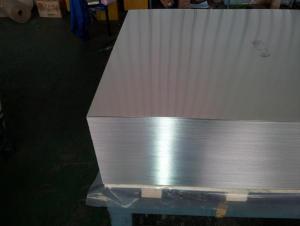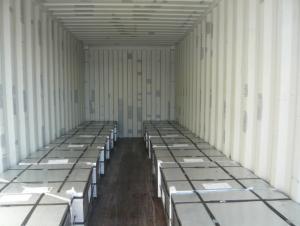Electrolytic Tinplate Sheets for Food Cans Packing
- Loading Port:
- Tianjin
- Payment Terms:
- TT OR LC
- Min Order Qty:
- 25 m.t
- Supply Capability:
- 7000 m.t/month
OKorder Service Pledge
OKorder Financial Service
You Might Also Like
1.Structure of Electrolytic Tinplate Sheets for Food Cans Packing Description
Electrolytic Tin Plate Coils and Sheets for Foods Metal Packaging, is one thin steel sheet with a coating of tin applied by electrolytic deposition. Tinplate made by this process is essentially a sandwich in which the central core is strip steel. This core is cleaned in a pickling solution and then fed through tanks containing electrolyte, where tin is deposited on both sides. As the strip passes between high-frequency electric induction coils, it is heated so that the tin coating melts and flows to form a lustrous coat.
2.Main Features of the Electrolytic Tinplate Sheets for Food Cans Packing
Appearance – Electrolytic Tin Plate is characterized by its beautiful metallic luster. Products with various kinds of surface roughness are produced by selecting the surface finish of the substrate steel sheet.
Paintability and printability – Electrolytic Tin Plates have excellent paintability and printability. Printing is beautifully finished using various lacquers and inks.
Formability and strength – Electrolytic Tin Plates have got very good formability and strength. By selecting a proper temper grade, appropriate formability is obtained for different applications as well as the required strength after forming.
Corrosion resistance – Tinplate has got good corrosion resistance. By selecting a proper coating weight, appropriate corrosion resistance is obtained against container contents. Coated items should meet 24 hour 5 % salt spray requirement.
Solderability and weldability – Electrolytic Tin Plates can be joined both by soldering or welding. These properties of tinplate are used for making various types of cans.
Hygienic – Tin coating provides good and non toxic barrier properties to protect food products from impurities, bacteria, moisture, light and odours.
Safe – Tinplate being low weight and high strength makes food cans easy to ship and transport.
Eco friendly – Tinplate offers 100 % recyclability.
Tin is not good for low temperature applications since it changes structure and loses adhesion when exposed to temperatures below – 40 deg C.
3.Electrolytic Tinplate Sheets for Food Cans Packing Images
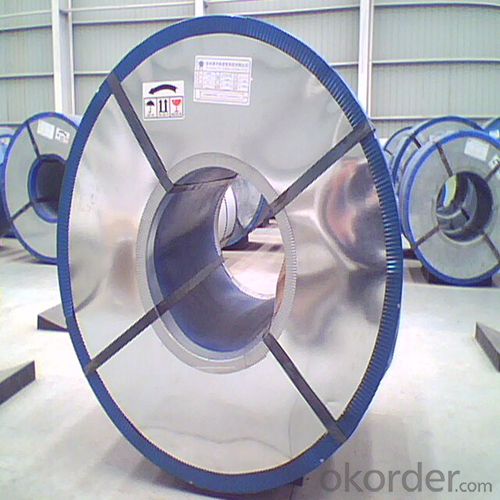
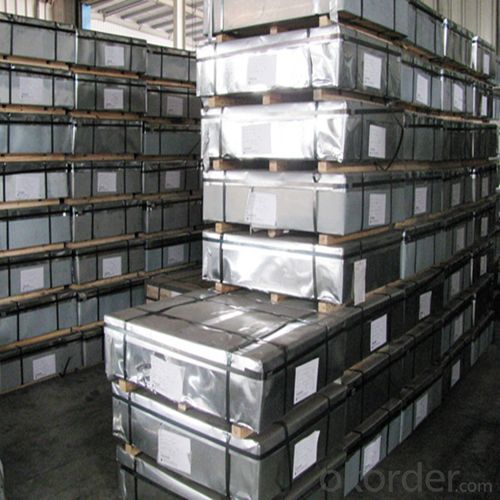
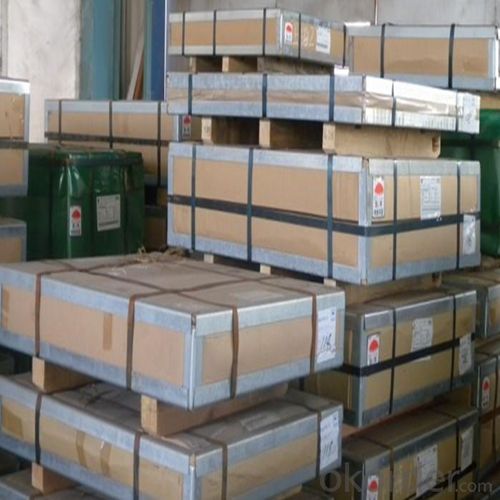
4.Electrolytic Tinplate Sheets for Food Cans Packing Specification
Standard | ISO 11949 -1995, GB/T2520-2000,JIS G3303,ASTM A623, BS EN 10202
|
Material | MR,SPCC |
Thickness | 0.15mm - 0.50mm |
Width | 600mm -1150mm |
Temper | T1-T5 |
Annealing | BA & CA |
Coil Inner Diameter | 508mm |
Weight | 6-10 tons/coil 1~1.7 tons/sheets bundle |
Passivation | 311 |
Oil | DOS |
Surface | Finish,bright,stone,matte,silver |
5.FAQ of Electrolytic Tinplate Sheets for Food Cans Packing
- How are the Electrolytic Tin Plates specified?
The Electrolytic Tin Plates are specified as per the steel base, extent of tempering, the coating weight, annealing method and the surface finish.
- How many types there are for base steels?
The base steels are of three types: Type MR, L, D
- Q: What are the main differences between tinplate and tinplate laminates in terms of design flexibility?
- Tinplate offers limited design flexibility due to its rigid nature, whereas tinplate laminates provide greater design flexibility as they can be combined with other materials, such as plastic or paper, allowing for more intricate and varied designs.
- Q: Can tinplate be used for packaging pharmaceutical products?
- Yes, tinplate can be used for packaging pharmaceutical products. Tinplate is a type of steel coated with a thin layer of tin, making it resistant to corrosion and providing a protective barrier for the contents. It is commonly used for packaging various products, including pharmaceuticals, due to its durability, tamper-proof characteristics, and ability to maintain the quality and integrity of the packaged items.
- Q: How is tinplate used in the confectionery industry?
- Tinplate is commonly used in the confectionery industry for packaging purposes. It is used to make tin cans or containers that preserve and protect various confectionery products such as chocolates, candies, and biscuits. Tinplate offers excellent barrier properties against moisture, light, and oxygen, ensuring the quality and freshness of the confectionery items. Additionally, it provides a visually appealing and customizable packaging solution, making it popular in the confectionery industry.
- Q: What do tinplate do?
- Material to distinguish between SR (Pu Tongcai) and DR (two rolled material)Annealing is distinguished by CA (continuous annealing), BA (bell annealing), different annealing, and different hardness. Corresponding to different processing properties.
- Q: What are the health and safety concerns associated with tinplate?
- Some health and safety concerns associated with tinplate include potential exposure to tin and other metals, which may lead to respiratory issues if inhaled. There may also be concerns related to the use of certain coatings or paints on tinplate, which could contain harmful chemicals. Additionally, handling sharp edges or cuts from tinplate can pose a safety risk.
- Q: What is the difference between food grade tinplate and ordinary chemical tinplate? What is the difference between MR material and SPCC?
- No general food grade and ordinary chemical tinplate tinplate. There are some major is not mature in domestic tin (MR, L, D) the production of tinned steel substrate outside, technology is not mature, not environmental protection, so there is a risk for food cans, can only be used for chemical tank.
- Q: Can tinplate be used for pharmaceutical packaging?
- Yes, tinplate can be used for pharmaceutical packaging. It provides excellent protection against moisture, light, and oxygen, ensuring the integrity and longevity of pharmaceutical products. Additionally, tinplate is resistant to corrosion and has a strong barrier against external contaminants, making it a suitable choice for pharmaceutical packaging.
- Q: What details should I pay attention to when purchasing tinplate packing boxes?
- Long engaged in procurement can know, when custom cans tends to care about is the first mold, mold it all if there is to say, if there is no mold that must face mold, mold cost is between the price of tin supplier are not much different from what. The key is really quantity.
- Q: How does tinplate perform in terms of electrical conductivity?
- Tinplate has relatively poor electrical conductivity compared to other metals, such as copper or aluminum. However, it can still conduct electricity to some extent, making it suitable for certain applications where electrical conductivity is not a critical requirement.
- Q: How does tinplate compare to other packaging materials in terms of recyclability?
- Tinplate is highly recyclable and is considered one of the most environmentally friendly packaging materials available. It can be recycled infinitely without losing its properties, making it a preferred choice for sustainability-conscious industries. In comparison to other packaging materials such as plastic or glass, tinplate has a much higher recycling rate and is widely accepted in recycling programs worldwide. Its recyclability significantly reduces the environmental impact and contributes to a circular economy.
Send your message to us
Electrolytic Tinplate Sheets for Food Cans Packing
- Loading Port:
- Tianjin
- Payment Terms:
- TT OR LC
- Min Order Qty:
- 25 m.t
- Supply Capability:
- 7000 m.t/month
OKorder Service Pledge
OKorder Financial Service
Similar products
Hot products
Hot Searches
Related keywords
